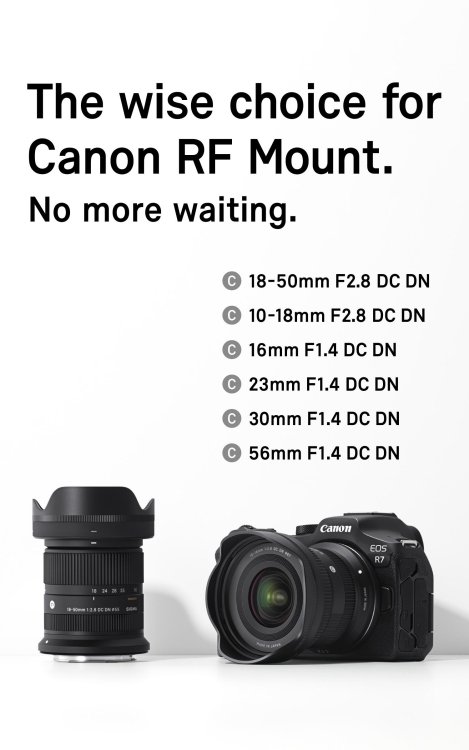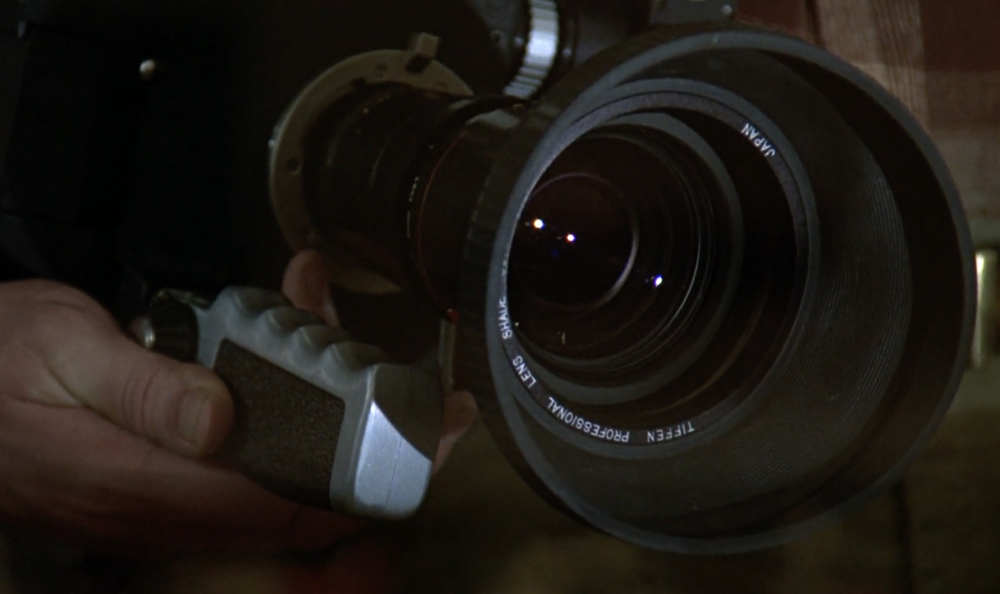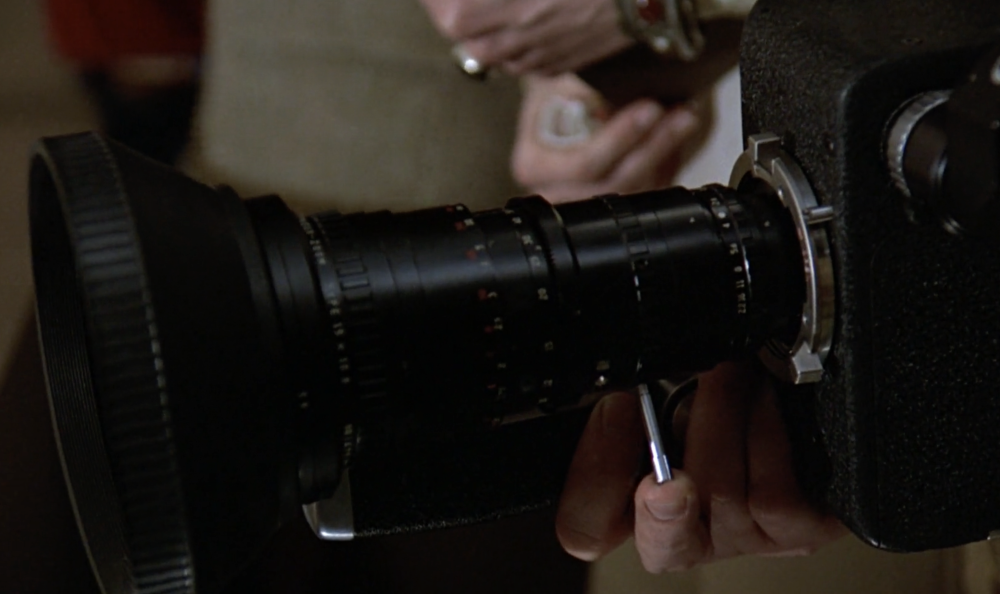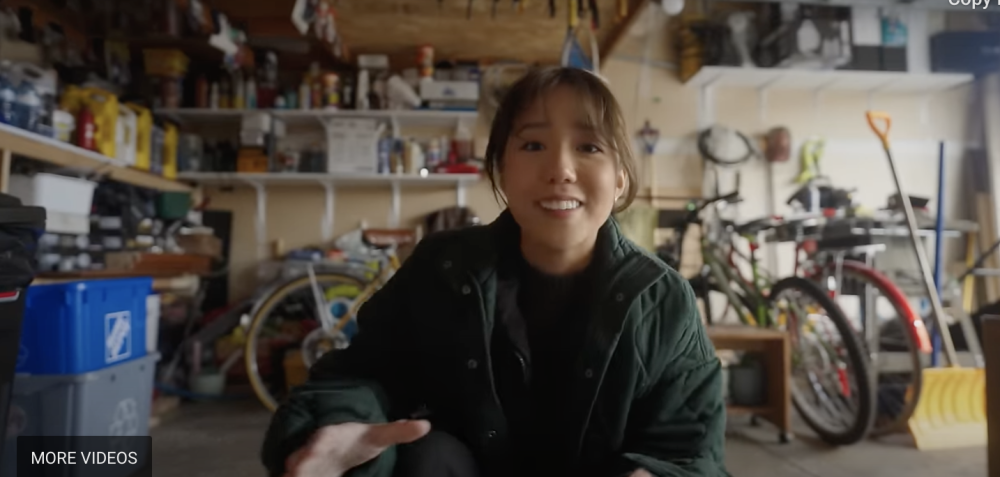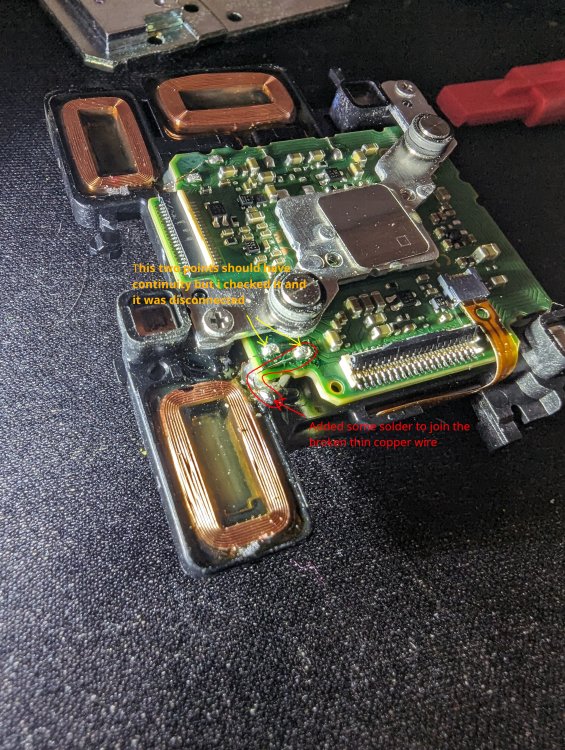Leaderboard
Popular Content
Showing content with the highest reputation since 04/19/2024 in all areas
-
Whenever I start thinking about the beginning of the DSLR revolution or the Digital Revolution, I take my own advice and go back to look at some old videos that I love from those forgotten cameras. This first round of films, from Kendy Ty and his t2i, I have linked to countless times, years ago, but I think they could be helpful or relevant to the OP's topic... If I remember correctly, he used the t2i and the old Sigma 30mm 1.4. I believe he even created his own picture profile, in camera, for his earlier films. Like so many others, he eventually moved onto a Sony 4K camera, but many people commented they preferred the look from his trusty, old t2i. If there's a lesson here, it's simple... sometimes less is more. Sometimes the tool that gets the job done and is simple to work with, is better than wading through the minutiae of features and tech finding the best camera.4 points
-
Color - SOOC vs. LUTs/Grading
eatstoomuchjam and 3 others reacted to mercer for a topic
To be fair, I vaguely remember the OP stating at some point that he/she likes to have discussions about gear. And let's be honest, this forum is primarily a gear forum. Perhaps the OP should mention that this discussion isn't necessarily about a decision he's currently planning on making and instead it's about learning and gathering information. With that said, @kye has a fair point. These cameras are only tools for creative endeavors. These cameras will not make the film or color grade your film or make your film good. At the end of the day, story is king. I would suggest to the OP that they take some time and go back and look what people were creating when the DSLR revolution began. Look at t2i and GH2 videos to see what was possible with limited resolution, DR and resources.4 points -
CP16. Cinema Products brand…who were also making this new gadget called a Steadicam that’s about to be 50 years old. It was a common news film camera. They also had mag film where the sound was recorded directly onto a mag stripe on the film itself. It wasn’t as good as the open reel recorder of course. I used one on my first short movie. It feels very cheap and lightweight but it was a staple.3 points
-
Sigma have announced that they are releasing a range of RF mount lenses, indicating that Canon have softened their “no 3rd party lenses” stance. I say softened rather than abandoned as, whilst these lenses are fully licensed by them, they do not include any full frame lenses. At least for now. The initial offerings are the two f2.8 zooms and four f1.4 primes from Sigma’s Contemporary range that have been available in other mounts for a few years now. The 18-50mm is the first one that will be available but it is not until July and the others will follow in the Autumn. No word on prices but they are usually similar in different mounts so you can take that as a rough guide, although maybe there will be an additional cost on top for the official licensing from Canon. Good news for owners of crop RF cameras to have different options and also for people using the KOMODO (or maybe we should call it the NIKOMODO now). Full details here https://www.sigma-global.com/en/contents/sigma_rfmount_lenses/3 points
-
PicoMic is still smaller and lighter, and the newer Pro version can use a lav mic. The receiver is bigger, but it's also the storage/charging dock for the transmitters, which is handy when you're going from mic'd to not mic'd, changing speakers often, etc. They just need internal recording and they'd be perfect IMO.3 points
-
Color - SOOC vs. LUTs/Grading
solovetski and 2 others reacted to mercer for a topic
And I'd be remiss if I didn't post this video from a British filmmaker named Paul Cook. It was the video that made me buy my 5D3 and install ML Raw on it and never look back. After 7 years, I'm still chasing what he was able to capture in an afternoon...3 points -
I agree. His Sony work does not respond to me, neither in the edit, premise, lengthyness, choice of focal lengths, camera movement nor framing nor color palette and contrast. @mercer That Sigma 30mm is a thing I had been keeping in my mind. I am a sucker for 28mm on S35. Kendys Canon work was magic, his Sony uploads on his channel are video imo. Besides colour, movement, framing and lensing are not in the same league as his Canon library imho. I can relate to the impact of a camera on freewheeling video essay work. I still hold a G70 in high regard for the mojo it has in HD 24p. The only two pieces I shot with it are still oozing color magic and forced me to design my shots and movements instead of gimbleing through the world rather effortlessly. No effort means no magic in most of the instances.3 points
-

Shooting a short
eatstoomuchjam and 2 others reacted to Tim Sewell for a topic
So there's a guy who lives near me - young guy, good looking - who 2 years ago gave up a film-making degree at a London university (can't remember which one - but a good one, I can remember thinking when he told me) to go on the tools with his dad, because he couldn't see any way that an expensive 3 year course was ever gong to wash its face. Was talking to his sister this evening and she reckons he'd be totally up for getting involved in my short. Which could mean I've either got talent that isn't me, or a camera op that isn't me. Either way, it suddenly makes this project a whole lot easier. (Not to mention Resolve 19 - which changes the space entirely!)3 points -
I highly recommend going to the source if you're interested in going deeper, here are a couple of interviews with Jill on Joker that I found to be fascinating and thought-provoking: ...and this interview with Jill on John Wick and other films where they even talk about specific shots etc: Lots of info out there if you search and go looking for it 🙂3 points
-
3 points
-

Color - SOOC vs. LUTs/Grading
eatstoomuchjam and 2 others reacted to kye for a topic
Here's my recommendation for SOOC shooting - Sony AX100. As Dave says "Sony AX100 looks better than your camera". Just look at the nice contrast, saturation, and above all... skintones! and in mixed lighting no less! Good luck getting that with a "better" camera - they all have far too much DR to give you a punchy image from their 709 LUTs or profiles.3 points -
Ha! Look at Tiffen putting all their info on there for a lens shade!! Talk about padding your part. How funny! Could the lens be a 15-150mm T3.1?2 points
-
I had X2, 1 inch 360 and still have One R 360. I did play a bit more with the X4 The good: - 8k is a very visible bump in quality compared to X3 and 1 inch. Still once reframed is not yet at single lens action cam level but is getting closer. Of course, it really depends on how much you zoom in while reframing. It is more detailed and less compression artifacts. Also, in 360 vr the quality bump is very evident. - operations and UI are snappier than previous models (other than stopping the recording that takes a lot, not sure why) - 5.7k at 60 it allows some slow-motion with X3 quality, in previous models the slowmo was just unusable. - one button operation is customizable so you can set the video mode, frame rate, etc... - battery seems to last a lot, even in 8k 30 - App and Studio are great and work as expected. Connecting the camera to the phone is super easy and always works. Why can't Canon copy them? The ok: - lens guards work ok, great way of mounting them, but is not a free lunch, they need to be super clean, and they still create wired flares. I will probably use mine only on really risky situation. But it is good that they are included. - audio seems a tad better - I don't see a big difference in lowlight compared to the 360 1 inch. They are both quite bad but the X4 is not worst imo that is surprising. - single lens mode allows you 4k 60fps but to be honest the quality gain compared to 8k reframed is not big enough, useful if you need 60fps or you don't want to post process. For example, for chest mount I prefer the reframed angle than single lens. - seems to tend to overexpose but you can set the EV so not a big issue. The bad: - no 10bit log - as for all previous models these type of camera scream for sunny bright days. I mostly using them while moving ski, mtb, horses, cars.... and as soon the light is not great stabilization and video quality suffers a lot. So it is a brilliant camera for sunny days only. - is heavier and bigger than the X3 or the One R + 360 module. - the form factor is perfect for selfie stick but not great for helmet mount. - has only a tripod hole, no gopro mount, it should have both. For action, mounting through the tripod hole will make the camera break in case of any impact where normally the gopro mount would give a bit saving the camera. You can use an adapter, but it makes it even taller. - apparently, every time you turn on the camera you need to re-pair the bluetooth mic. Btw why why and why DJI is disabling internal Mic 2 transmitter recording while connected via bluetooth?!? It would be such a clean solution record scratch over bluetooth (no receiver needed) and have the 32bit float on the transmitter. - external audio through receiver + cold shoe mount + usb adapter is a frankenmoster that is really not usable in action environment. All the YT reviver showing this setup as amazing it makes me cry.... Overall is the best 360 camera on the market by far, coming close to single lens action cam quality, below 2k usd. Finally, after years of stagnation, a tangible bump in quality. With the revival of AR/VR they should do a 180 3D model out this.2 points
-

The China Syndrome (1979): What film camera did Micheal Douglas' character use?
kye and one other reacted to John Matthews for a topic
2 points -
I think that if you can possibly manage it, it's best to provide the simplification yourself rather than through external means. This gives you flexibility in the odd example you need it, and doesn't lock you in over time. The basic principle I recommend is to separate R&D activities from production. Specifically, would recommend doing a test on the various ways you can do something, or tackle some problem, and the options for your workflow, evaluate the experience and results, then pick one and then treat it like that's your limitation. I'm about to do one of those cycles again, where I've had a bunch of new information and now need to consolidate it into a workflow that I can just use and get on with it. Similarly, I also recommend doing that with the shooting modes, as has happened here: I find that simple answers come when you understand a topic fully. If your answers to simple questions aren't simple answers then you don't understand things well enough. I call it "the simplicity on the other side of complexity" because you have to work through the complexity to get to the simplicity. In terms of my shooting modes I shoot 8-bit 4K IPB 709 because that's the best mode the GX85 has, and camera size is more important to me than the codec or colour space. If I could choose any mode I wanted I'd be shooting 10-bit (or 12-bit!) 3K ALL-I HLG 200Mbps h264, this is because: 10-bit or 12-bit gives lots of room in post for stretching things around etc and it just "feels nice" 3K because I only edit on a 1080p timeline but having 3K would downscale some of the compression artefacts in post rather than have all the downscaling happening in-camera (and if I zoom in post it gives a bit more extension - mind you you can zoom to about 150% invisibly if you add appropriate levels of sharpening) ALL-I because I want the editing experience to be like butter HLG because I want a LOG profile that is (mostly) supported be colour management so I can easily change exposure and WB in post photometrically without strange tints appearing, and not just a straight LOG profile because I want the shadows and saturation to be stronger in the SOOC files so there is a stronger signal to compression noise ratio 200Mbps h264 because ALL-I files need about double the bitrate compared to IPB, and also I'd prefer h264 because it's easier on the hardware at the moment but h265 would be fine too (remembering that 3K has about half the total pixels at 4K) The philosophy here is basically that capturing the best content comes first, and the best editing experience comes next, then followed by the easiest colour grading experience, then the best image quality after that. This is because the quality of the final edit is impacted by these factors in that order of importance.2 points
-
Actually, what am I blathering about?! The only time I need the EIS is for tracking the couple, outdoors, once, maybe twice. Doh. Absolute none issue. I'll simply put it on a function button! I'd normally be tracking at '42mm' and it will be '58mm'. I'll just increase the distance between myself and the subject by a couple of feet et voila. Move on, nothing to see here 🤪2 points
-
My impression was that people like the Alexa image for everything. The DR only matters if you're filming something that is high DR, and even then if you're watching it on a 709 display then the Alexa images have the same DR as every other camera. I also find that Alexas look green in camera tests, but probably the main reason for loving the Alexa look is that when used on big productions or by people that know how to use it, the images look great. However, the Alexa is just a very high quality RAW camera - the files that come out of it are as neutral as you can imagine. It's the paradox of modern camera discussions. The best looking images come from the most expensive cameras because the people who know that production design and colour grading is what makes great looking images are going to all that trouble anyway and so may as well rent an Alexa (or RED). Would the production have looked as good if they shot it on a P4K or S1H? I'd say maybe 95% as good - maybe 100%. But, because the people using the P4K or S1H aren't using them in situations where they've put as much effort into production design or colour grading, those images don't look as good. Not really my tastes. Riza does a lot of work to light herself really well, but the diffusion and colour grading aren't to my tastes. The image is too diffused and too cream and pastel green/brown for me. Most of that is in her production design, considering that the blue and yellow in this shot looks relatively normal: It's the "aesthetic" look that is trendy right now on YT, but Riza takes it to a whole new level. In a way it's similar to this palette: But compare the two shots above and notice that the bottom one is a lot crisper - Riza uses a huge amount of diffusion so everything looks hazy. Maybe it's just my associations.. when I grew up the interiors that were the right age to be old and shitty were the Mission Brown ones, and compared to the colour schemes of the time it just looked drab and dull, which combined with the fact it was old and falling apart, really didn't enamour it to me! I suspect that for the cultural references of the people making this content right now, this probably balances out the previous aesthetic choices in a way that makes them feel better about themselves and about life etc. In times of change people get pretty stressed and going for a soft brown and green palette it's probably unconsciously evoking nature and naturalness in some way - which makes sense if you think about the existential threats of climate change and AI that we are currently facing. People of this age are having climate anxiety in a big way, so it's a real thing in their world.2 points
-
I agree (having owned 10 of their hybrid cameras and 2 camcorders in the last 15 years). Panasonic has a long heritage in professional video (going back over 60 years) and it shows. I think the GH5 became a very popular camera for video because it was a good all-round, reliable, video tool in most situations, rather than excelling in any particular area at the expense of others or having a specific SOOC 'look'. For a bit of fun, this is 9 year old, basically SOOC, FHD 50p video from a Panasonic LX7 'enthusiast compact' with a small 10MP 1/1.7" sensor. There's some obvious aliasing/jaggies and I think the reds/oranges in particular are exaggerated. But for a camera launched in 2012 that fitted in the palm of one hand and weighed 270g I think it is reasonably decent (and could be improved in post). SOOC video from a G6, GX85 or G80 would leave it in the dust though, having much less aliasing and better balanced colours.2 points
-
Color - SOOC vs. LUTs/Grading
ac6000cw and one other reacted to KnightsFan for a topic
Yeah I heard the original question, and I think that while the posts diving into complex grading are fascinating and useful to those of us who do post, I know that getting good color SOOC is a separate question. One big point about your question is that it doesn't break down by manufacturer. Not all REDs look the same, not all Sonys look the same, etc. I think the Sony FX6 looks fine, but I dislike the FS7. Also, most cameras have different profiles. Sometimes, there is greater difference between profiles on the same camera, than between normal/natural/standard/default/whatever profiles on many different cameras. And even within a profile, you'll have totally different results based on how many controls you leave on auto (such as WB) and your lens. SOOC and minimal grading are completely different. SOOC excludes log profiles, for one thing. There is budget as well. Best SOOC ever? Alexa 35, probably. Under $10k? C500mkII gets my vote. Under $2k? Nikon Z6 is solid. Are you including lenses in your budget? I like the color out of my Canon L 24-105 better than that of my Canon 50 1.8 (tested on Sony A7rII). Though I have also used terrible lenses for specific scenes, specifically to make them less appealing. If you want a specific answer or even a specific discussion, ask a more specific question because your original question is extremely open ended--which is fine to start with! But it's probably more useful and interesting to narrow the parameters a bit.2 points -
I like the look of it too. I think what it is benefitting from greatly, aside from the compositions, image quality and general shooting competency, is what I would call accidental environmental production design. The uniforms and demeanour of the subjects are consistent and tie together as does the station setting and its train and staff. When the shots are framed, as many of them are, to only include those elements then it provides the right aesthetic to sell the "cinematic" image. The proof of that, for me at least, is when other none designed elements stray into the frame and not just the obvious of modern vehicles etc but onlookers with modern clothes (particularly those out of the general colour palette) then the illusion is gone and quite jarring to be taken out of it. No amount of obsessive grading is going to cure that. Oh and the use of a tripod does absolutely no harm whatsoever in this as does the flattish light of what I am guessing is the archetypal overcast Bank Holiday day in the UK. All in all, aside from it being a good advert for a camera from "yesteryear" in modern terms, I also think this is more broadly a very good example of why "cinematic" doesn't just happen when wafting a camera at random scenes no matter what YouTube thumbnails will scream at you. When it comes to trying to do this in the wild, its definitely a case of granting ourselves the serenity to accept the things we cannot change, the skill and vision to change the things we can, and the wisdom to know the difference.2 points
-
Panasonic S5 II (What does Panasonic have up their sleeve?)
John Matthews and one other reacted to Al Dolega for a topic
Update is live: https://av.jpn.support.panasonic.com/support/global/cs/dsc/download/ff/dl/s5m2x.html2 points -
More examples of bad lighting. This was a 709 shot from my GF3, which obviously couldn't auto-WB far enough to compensate (yes, this looked white in person): My best attempt at grading in post also couldn't compensate well enough: But the real demonstration is on a project. Here's a camera test I shot. These are the images after grading: They all look pretty straight-forward, but it took a lot of work to get to that. Here are the shots SOOC: Note that adjacent shots have considerably different looks - SOOC: After: Obviously I've let the flaring lower the contrast on the middle images to a certain extent because otherwise it would look too forced, but the tint of the first image and second ones needed to be evened out as one had the sun in it and the other didn't. I've shot these tests by the beach many times, using many different cameras (OG BMPCC, BMMCC, GH5, GX85, XC10, GF3, iPhone, GoPro, etc), shooting manually and in auto, in RAW / LOG / 709, etc etc. All required decent amounts of work in post to even them out and look normal. It's like anything - the natural look takes the most amount of work and is, in reality, the least natural. You keep saying you want nice looking images without doing any/much work, but I've been working super hard at this for quite some years now and it's just not possible. You either get nice looking images with work, or you wave the camera around and you get out what you put in - a film that looks like a dad with a handycam. The myth that you can buy it was created by equipment manufacturers trying to sell you cameras and LUT bros on YT trying to sell their LUT packs.2 points
-
🤷♂️ It looks great to me. I'm not looking for an image that looks exactly like reality. It's definitely desaturated, but I don't agree that it's low contrast. No offense to the photographer of that shot, but that looks like it could have been shot with any standard profile from a camcorder in auto mode. As far as... how can I judge the image... look at the skin tones... the weight of the image. It looks and feels like a real movie.2 points
-
Color - SOOC vs. LUTs/Grading
eatstoomuchjam and one other reacted to mercer for a topic
Both of those cameras are great, you should get one. What are you shooting with now?2 points -
Blackmagic New Products Update - 13th April 2024 17:00 BST
IronFilm and one other reacted to A_Urquhart for a topic
BMD’s menu system and OS is already designed around a 4-5” screen. It’s a great OS and menu too! To make one for a two inch screen would require a complete redesign. Im not sure they would save much money by doing this TBH. I think the side screen works. Means you can change settings and get a visual, useful if rigging the camera on a gimble, car etc just for lining up.2 points -

Joker 2 - Color Breakdown
Tim Sewell and one other reacted to MrSMW for a topic
It’s also an ‘updated’ film noire approach for the 2020’s. There’s also a nod I think to Wes Anderson, but not in a comedic way and almost every single frame is a like a work of art. The locations, the lighting, the framing, how one frame leads in to another… My kind of filmmaking.2 points -
Shooting a short
Tim Sewell and one other reacted to mercer for a topic
Making a film is one of the hardest things I've ever attempted... especially in a DIY, low/no budget space... but it's also one of the most exhilarating experiences I've ever had... even if ai haven't been successful with finishing the film... Yet.2 points -

Joker 2 - Color Breakdown
Tim Sewell and one other reacted to MrSMW for a topic
It’s not just because the B&W makes it ‘arty’. The script is great, taking what was originally a book, then a French film, then the well known Matt Damon movie and now an 8x near 1 hour episode series. The acting is great. The cinematography IMO is superb. I have zero criticisms of it and that is rare for me.2 points -

Joker 2 - Color Breakdown
Tim Sewell and one other reacted to MrSMW for a topic
And the utter lack of it has me admiring Ripley on Netflix right now. I’m partly thinking the Amalfi coast should be in colour, but the rest is definitely working for me as a B&W production. Of course it would look shite if the coastal stuff was colour whilst the rest was B&W but chapeau on this 8 parter, I think it’s great. Sorry it’s not a Joker II comment 😛2 points -
Color - SOOC vs. LUTs/Grading
ghostwind and one other reacted to eatstoomuchjam for a topic
One of the reasons that people are getting frustrated is that you're "asking basic questions," but then basically ignoring a lot of the answers. It's like you keep asking what saw makes the best cabinets. When people tell you that you need more than a saw, you start asking people to compare brands of saws. Which cameras has the best color and in-camera noise reduction? All of them. Also, none of them. Go to NAB and ask 100 people on the floor. Every one of them will be completely correct. Every one of them will be completely incorrect. How do you know? Ask almost any of the others. It is also a bit frustrating that you are asking questions that seem like you are trying to choose which camera to buy and after you receive a bunch of answers, you shift your focus and start asking again. If you want somebody to yell at you about which camera has the best colors, go to YouTube. There are dozens of people shouting about how the camera that they bought is the best camera ever. Then just try to ignore the other videos from all the people saying it's the worst camera ever. Heck, there are already dozens of videos just about the Pyxis talking about how it's the best camera released in years or the most ho-hum camera announcement so far this year. Bonus: almost none of the people with those videos has even seen a Pyxis in person, much less actually shot with one.2 points -
Same! The color really brought us into a different/alternate universe!2 points
-
Color - SOOC vs. LUTs/Grading
eatstoomuchjam and one other reacted to SRV1981 for a topic
I just realized - I did come to the wrong forum. I just assumed this was a wider community than what actually is. Many view themselves as filmmakers. I do not, I’m sure there’s other forums/places to chat just about equipment etc and not ruffle weathers of those who see themselves as “filmmakers”.2 points -

Joker 2 - Color Breakdown
kye and one other reacted to Tim Sewell for a topic
Actually unreservedly loved it. I'm finding that I'm gradually getting further and further away from preferring verite/realistic looks and getting into the wilder end of things!2 points -

Joker 2 - Color Breakdown
eatstoomuchjam and one other reacted to kye for a topic
I'm just wondering why you were posting a random YT video. If I posted a new thread with every video I liked then the place would just look like my YT viewing history and not a forum where discussions can happen and people can share knowledge etc. I don't know what experiences you had in high school, but I've been an adult a long time and I've become fond of talking to people. I really don't know what you were trying to say? What point were you trying to make? Maybe if you actually typed something then there might be some communication....? There are all sorts of interesting things in that video, so the discussion could be a good one. Let's all leave high school behind and try and discuss things like adults 🙂2 points -
Not really, I've asked basic questions for discussion purposes but the elitism and condescension as your post demonstrates is strong here - i'd rather just find a place with more amateur enthusiasts rather than certain folks who think highly of themselves1 point
-
Not at all surprised - doing that is far more complex and creative than the simple documentary stuff I normally produce.1 point
-
I'm not familiar with the GH5v2 but Panasonic was (at that time) updating cameras with all the user-feedback, and your description was certainly things that the community was wanting. I definitely agree that one of the main challenges is taking a clip that was shot in LOG and has 10-14 stops of DR in it, and somehow stuffing that into Rec709 which has just over 5 stops of DR. This obviously manifests in having to crush or severely compress various areas of the luminance range, but it also means that the source material can have colours that are dramatically more saturated than Rec709 can contain and you'll need to work out how to contain those too. Once you have enough DR to shoot the scenes you need to shoot, having more is actually a liability rather than a feature. I co-produced a 5-min short with my sister a long time ago, and we estimated that all up it had 10,000 person-hours in it. But enough of this blasphemous film-making talk - we should go back to talking about camera colour profiles like film-making doesn't exist!1 point
-
The thumbnail of the XH2s and the profile picture of the guy look IR heavy indeed. It seems like he actually likes this look.😊1 point
-
I've been mentioning this before,that I found the GH5 much easier to grade than the S series. It has 709 as colour space vs V-Gamut on the S cameras, also two to 2.5 stops less dynamic range. For lit scenarios I was very fine with the full curve and gamut as contrast and color was much more stylized and designed. The GH5 in MK II alteration is still a camera I wanna check out with its creamy high resolution image. It's more classic and organic compared to the crispier image of the MK I. I have only seen one person ever with the MKII. It has 10bit in 60p 4K as well. And from the Mark I the beloved S16 crop or optional 2/3" mode via 2x digizoom. Is the latter without heavy aliasing and moiré on the GH5? @kye1 point
-

Joker 2 - Color Breakdown
SRV1981 reacted to Tim Sewell for a topic
I watched this yesterday and it inspired me to watch the first film (only 5 years late!). It's unusual to see Waqas quite so excited about something but it was an excellent view into the art, rather than the technique, in top-end colour grading.1 point -
Looks like it's only a problem with the nisi vnd1 point
-
Panasonic S5 II (What does Panasonic have up their sleeve?)
j_one reacted to Llaasseerr for a topic
I had a chance to test this, it does look like the extra green shadow noise introduced by the new autofocus is somewhat reduced by shooting at the higher base ISO 4000 if the situation allows for it. So shooting with an ND could work.1 point -
I especially love the second shot. @mercerLooks fantastic. I have not come around filming anything for almost a year now unfortunately. All my colabs have moved themselves into the shady hideaways of oblivion and my aspirations to be a full time crewmember have been very low after my accident I had on a job. But your posts are some of the very few on this forum which inspire me to start filming again. S35 is fine for me on my S1H btw.:) Also waiting for some more fine reads from @QuickHitRecord 😊1 point
-
I had a faulty GX80 showing me a message a few seconds after power on: "Please Turn Camera Off and Then On Again". I knew it was the ibis failing because only one part of the sensor was static and the other part was very wobbly. So I dismantled my camera following this tutorial until I reached the 10th step. Once I had the ibis+sensor out of the camera, I only had to remove 3 screws and to separate the 2 flex of the sensor. Then, I realized one of the tree electromagnets had no continuity, and added some drop of tin to join the broken copper wire. And it's fixed and working again. I am so happy! I include an image of the point that was failing1 point
-

Sony vs Canon colour science - does this explain the difference?
SRV1981 reacted to theSUBVERSIVE for a topic
From a presentation I watched from Alister Chapman I got to understand - not fully - a few things about colour science, logs, sensor, etc. with my own take on it since he wasn't talking about this specifically. He basically explained the differences between broadcast standard, how to use the extra stops you get in these cameras and how log works. I think that the sensor itself is less important to the discussion because that's just a workspace, two manufacturers or more can use the same sensor and have very different results in the end. Colour science does matter, I can't agree with those that say like "it doesn't, you just have to grade better", that makes zero sense. Actually in the presentation Chapman said something similar to Andrew's theory, Sony is an engineer company and they make it so you can get the most color gamut possible, therefore, they get more green as well, which not necessarity means it will make better images. But that's just one step, the other one is how you use it. He also talked about how the green end up shifting to fit the workable color gamut and he even explained the difference between S-log 2 and S-log 3 in more details and why S-log 2 is more complicated to grade or why you record S-log exposing to the right, about 60% zebra. When you create a log or a picture profile, cine gamma, etc. that's when you start to use the information you have from the sensor and in this case, simply showing all the color gamut is not really the best option and that's when colour science comes. I don't know if I would use the word artistic here, but more like perception, so making the data you get into something that looks more natural to our perception does make a lot of difference, even more because during color grading you will be doing something similar. But let's say that after the data you get, you make something unbalanced because you wanted to show all the color gamut possible, then it will be much harder to get a more natural look since you will be getting more green and depending on several factors like color space, compression, etc. you might not be able to get what you would had you created a more balanced log with a better colour science. So basically with a better colour science you make a better use of the data you can get from the sensor, it doesn't necessarily mean showing more colors or even scientifically accurate colors. Of course that also means it's subjective as well and there is no a right and worng exactly, but overall, when the difference is notable you can say that one colour science is indeed better than the other and when it's closer, then it becomes more of a personal preference. That's probably also why you have a big difference between measurements of stops, color gamut, etc. and practical, real life aplication because measurements don't really tell how you use it and that's also why those DxO ratings don't mean one camera is better than the other. - As for why the S-log 2 is harder to grade, in simpler words it's something like it's more curved than S-log 3. When you grade usually you will do it based on that middle and the S-log 3 from that part and above is more like a line and less like a curve, so when you grade it up or down, it's more uniform. With the S-log 2 you have to basically grade the shadows, middle and highlights separedly because if you do based on any of these 3 parts, the value you add or substract will be different in the other section, so it's not uniform. That also matches the info I got watching a Sony guys talking about S-log 2 S-log 3. He said that S-log 3 is easier to grade and that S-log 2 is better for highlights while S-log 3 is better for shadows and if you look at the curves you can understand why, S-log 2 has more values for highlights while the S-log 3 has more values for shadows and mid tones. I think that "better" is not really the word, it's more like more nuances. Chapman also talked that in 8-bit codecs if you really want more information, you better off with S-log 2, if you want something easier to grade you can go to the others gamma curves. He explained why in low light you DON'T USE S-log at all, which totally makes sense, unless you are at night but filming a lot of light, recording in S-log will only make it noisier because although you will be getting more data overall, in the areas that matter it's the opposite, making is much noisier and that's also why S-log is no good for chromakey as well.1 point -
good point ! That would make sense as I have seen in an interview a samsung rep saying that you can play the nx1 h.265 files on their tv's. Could be why they chose h.265 & their vivid color science1 point
-
Back to the original subject of the thread: Andrew has a point that Canon cameras produce more pleasing/aesthetically appealing color than Sony (and Panasonic and Samsung, for that matter). But I don't believe that this has to do anything with sensor tech respectively color gamuts. After all, Nikon produces pleasing color, too, but uses Sony sensors. We shouldn't forget that 8bit video - i.e. the signal recorded by Sony A7 cameras, most Canon C-series cameras, Samsung NX1 and Panasonic GH4 internally - represents only a fraction of the sensor's color information. In the case of 14bit sensor signals, 8bit video only contains 1/64th or 1.5% of the original color information, in case of 12bit sensor signals, only 1/16th or 6.2%. (You might argue that debayering isn't factored in here for the 12/14 bit signal, but on the other hand, 4:2:0 chroma subsampling isn't factored in for the 8bit signal either.) So it's all about which choices the jpeg/mpeg engine of the camera makes: which 98.5%/93.8% of colors it will throw away and which it will keep. Cameras by consumer electronic manufacturers seem to be biased towards keeping a lot of green channel information because it will result in images that the untrained eye will perceive as sharper/more detailed. (The human eye can see greens better than other colors, a product of evolution and the age where hunters and gatherers need to spot prey or enemies in the woods.) It's probably the color science equivalent of edge sharpening, chroma oversaturation and increased micro contrast that is commonly used in consumer/amateur cameras to make images "pop" and appeal to the average consumers. We shouldn't forget that Sony, Panasonic and (still) Samsung produce affordable consumer 4k cameras to boost sales of their 4k flatscreen TVs. I wouldn't be surprised if their color sciences is optimized for those TVs rather than for professional or cinematic/photographic video production.1 point
-
Sony vs Canon colour science - does this explain the difference?
SRV1981 reacted to austinchimp for a topic
true, and after working extensively with the original A7s, Red raw and now the Canon 1DC I can confirm that they all need skilful tweaking straight out of the camera. The difference for me has been that with Canon and Red files the first hour or so of grading is correcting the colour (removing weird casts, exposure, getting skin in the right area, making it look natural) and then I can go onto working the general look and feel. Where as with Sony - in any colour profile you choose - the first stage of 'fixing' the image so that it looks natural never really ends. I find it very hard to ever reach a point of having a natural look I'm satisfied with, and then any additional change I make to the image tends to knock all my previous work out of whack. With the Canon files, once I've got it to a natural, neutral point, further creative grading seems to go much smoother and doesn't stray out of a natural getting image as much. What I'm basically saying is that in my workflow Sony A7s footage requires me to constantly wrestle with the image to stop people looking like aliens or zombies, whereas in Canon footage I can push and pull the image much further while people tend to remain looking like people. As a working pro those hours saved and reduced stress is hard to put a value on. as an idiot, I greatly appreciate this!1 point -

Sony vs Canon colour science - does this explain the difference?
SRV1981 reacted to Michal Gajdoš for a topic
The color is not a physical property of any object, it is only subjective to our mind. What we are used to. There is zero science to your claims that Canon has "better" colors, there is no "better" color. A certain color you might find pleasing, is disgusting to others. Just as stated here: On the other there are also articles saying the opposite, like this one : http://web.mit.edu/abyrne/www/ColorRealism.html, but as they say it works only to a certain degree. However it is important to note the difficulty of creating a nice look with the sony's S Log compared to baked colors of Canon straight out of camera. Personally, I don't care if canon has almighty color, if those grandpas cannot give me simple stuff like focus peeking or articulated screen (what is the almighty color shot to me if it is not in focus and my back is crying in pain) to more sophisticated stuff such as slow mo, better DR, better sensor etc. etc. etc. If only we could combine best of both worlds1 point -

Sony vs Canon colour science - does this explain the difference?
SRV1981 reacted to TheRenaissanceMan for a topic
To answer the question in the article: No, not really. Canon's color space is just more idiot-proof than Sony's.1 point


